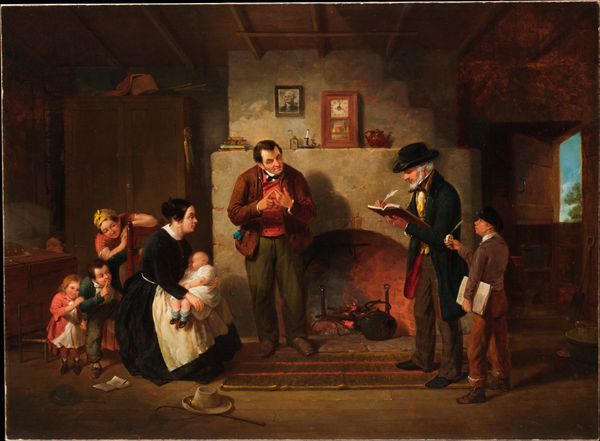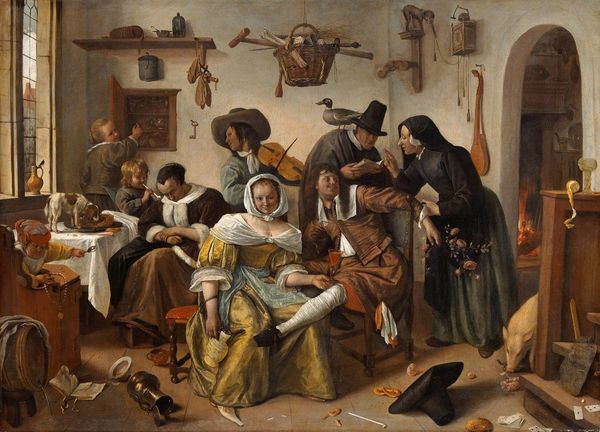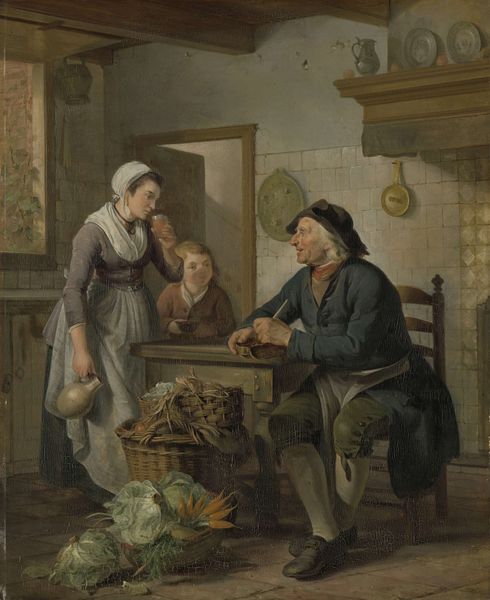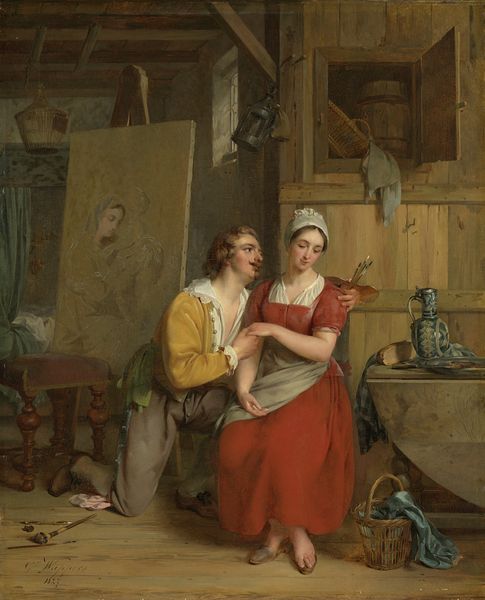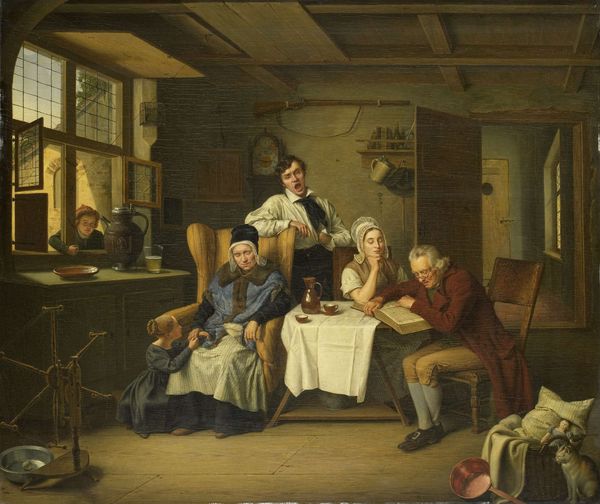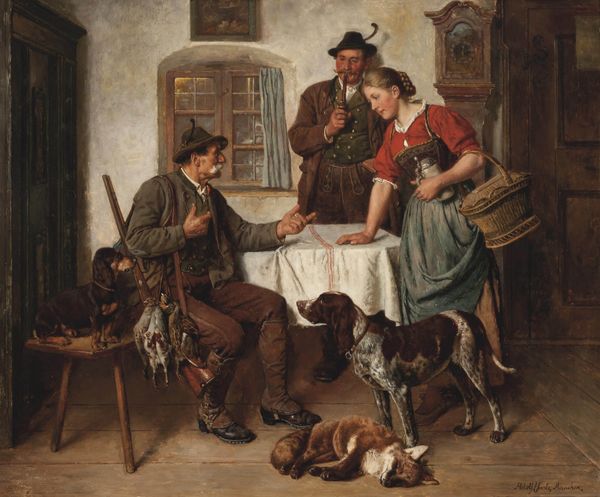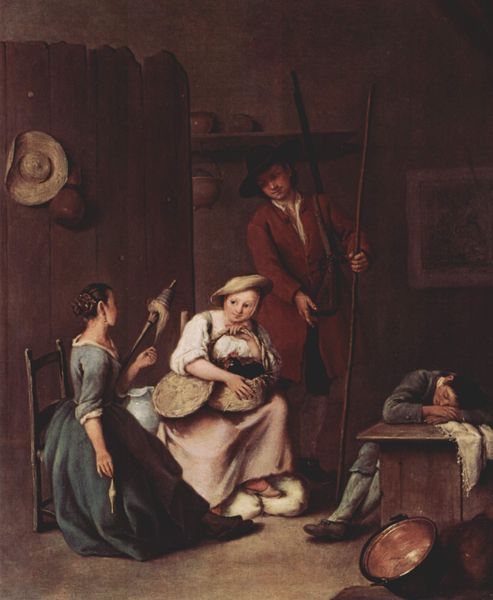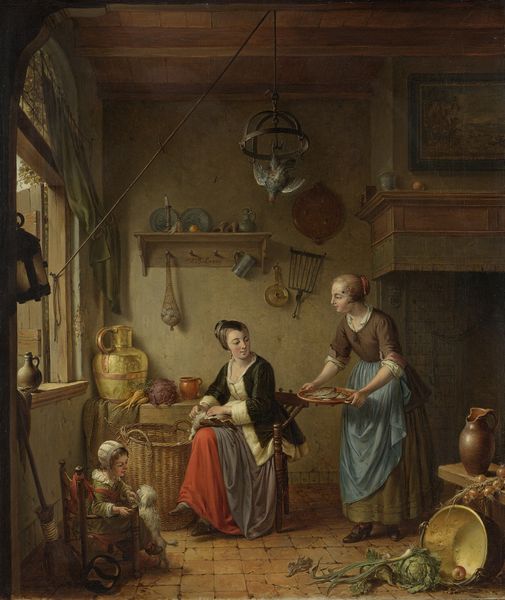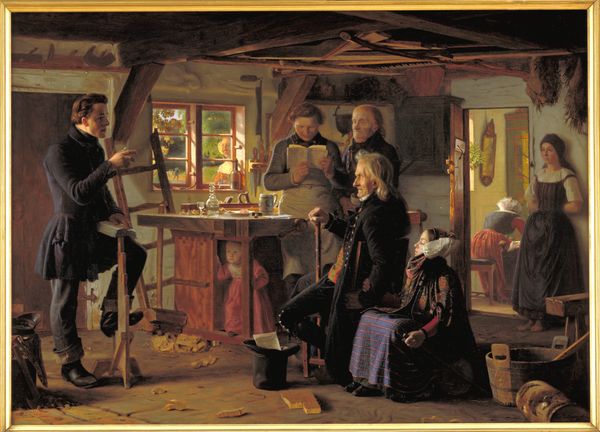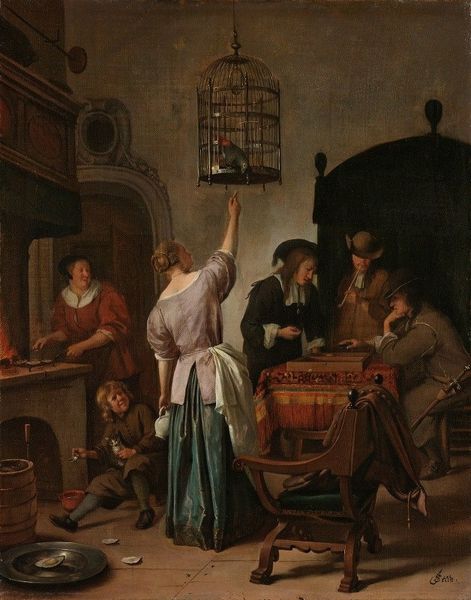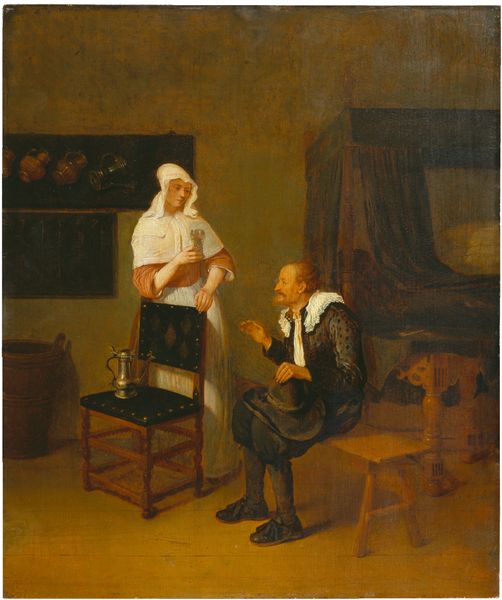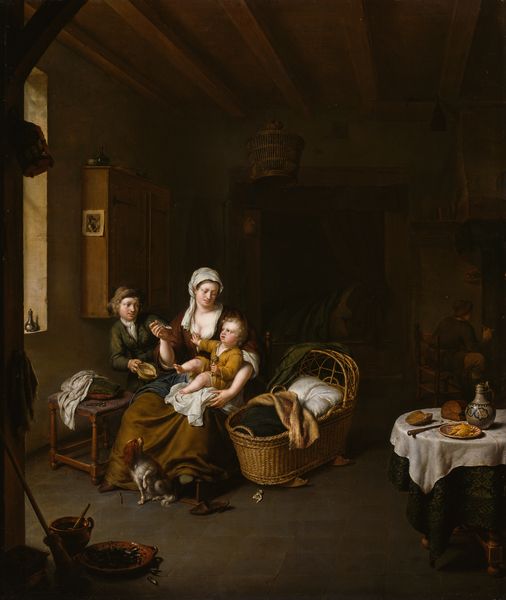
Dimensions: 25 x 30 1/8 in. (63.5 x 76.5 cm)
Copyright: Public Domain
Curator: Ah, “The New Bonnet” painted in 1858 by Francis William Edmonds. A scene filled with so much domestic intrigue. What are your initial thoughts? Editor: Immediately, I notice the tension created by the off-center composition. The placement of figures generates an imbalance that conveys an unsettling atmosphere. Curator: Indeed. The piece tells a story, or at least, hints at one. Edmonds was known for his narrative paintings, and here we see a young woman presenting a bonnet, perhaps a gift, while an older gentleman seems troubled by a letter. It all feels so charged! I wonder what dramas play out here. Editor: Look at how Edmonds utilizes light. He manipulates it not just to illuminate, but also to sculpt and differentiate spaces within the painting. The strong sidelight from the window heightens the three-dimensionality of the figures. Note also how each area is defined by contrasting colour temperatures. Curator: I can sense that shift. There's a stark difference between the bright optimism outside and the subdued drama inside. The open door with the child peering in…it brings such a poignant touch. All this captured with such precise detail. But beyond technique, I sense something almost theatrical—everyone poised, holding their breath, waiting. Editor: Note how the arrangement of objects such as the cooking pot, pumpkin, jug and even the dog are aligned in such a way as to draw our eye through each quadrant of the painting. These create pathways in the mind, that reflect states of conflict or balance within the represented social unit. Curator: That sounds right. I always found that I was immediately sucked into its rich details. "The New Bonnet" invites you into an older time; it's a glimpse into their lives with unanswered questions, perhaps hinting at things they'd rather not say out loud! It evokes stories rather than explains them. Editor: And this quality demonstrates that Francis William Edmonds’ success lies not just in capturing what something looked like, but in his clever evocation of what that something meant to a particular moment of societal, aesthetic, or conceptual significance. Curator: So beautifully put, let’s move on.
Comments
No comments
Be the first to comment and join the conversation on the ultimate creative platform.
